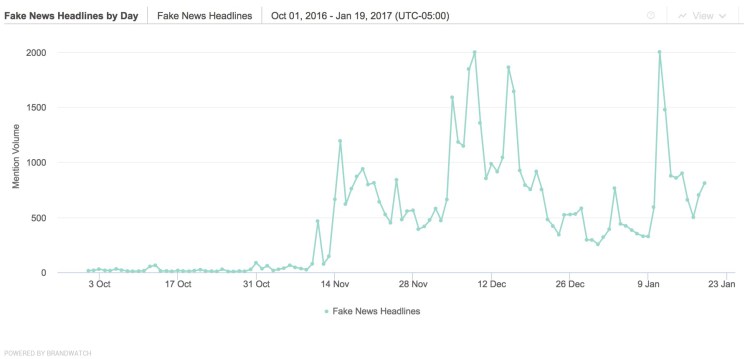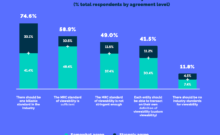It has been an interesting start to the new year. Donald Trump is president, and fake news is a widely discussed phenomenon.
Although the exact definition of “fake news” has been severely distorted as people (including Trump himself) have hurled the term as an insult toward anyone they simply disagree with, data show that it remains a popular topic internationally. Since the presidential election, coverage of fake news has increased as reporters tried to explain why people who primarily got their news through social platforms couldn’t tell when they were sharing false stories, and how automated ad buying enabled the fake-news ecosystem.
“As reporters uncovered the sources of many of the fake-news stories, the global nature of programmatic selling and buying was revealed,” said Forrester analyst Susan Bidel.
Media coverage
For a few months the press has extensively covered fake news. Brandwatch found that since the beginning of October, there have been about 54,000 stories with “fake news” in the headline. As the chart below shows, the stories began coming out in waves after the election.
A MediaMath spokesperson said that awareness of fake news increased around the election because fake news was pushed out to confuse voters and influence the outcome of the election, when previously fake news had been relegated to fringe websites and distributed in lower quantity…..READ MORE at: Original Article: digiday.com









